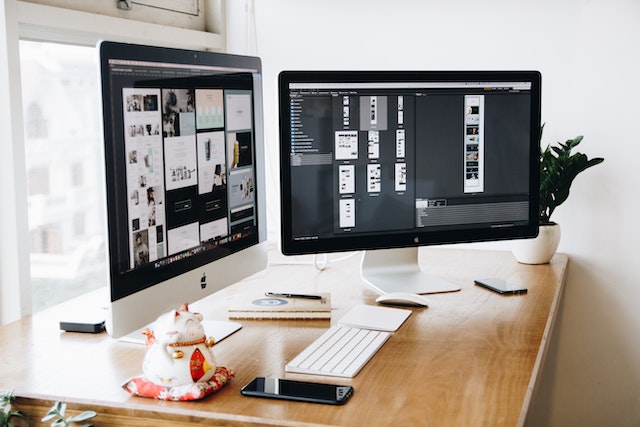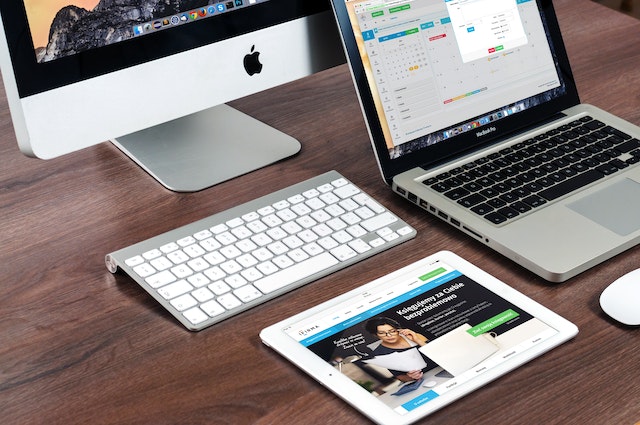The usefulness and usability of a website, not its aesthetic design, define its success or failure. User-centric design has become the norm for effective and financially motivated web design because the visitor to the page is the only one who clicks the mouse and thus determines everything. After all, a feature might as well not exist if people can’t use it.
The usefulness and usability of a website, not its aesthetic design, define its success or failure. User-centric design has evolved into a typical strategy for successful and profit-oriented online design since only the page visitor clicks the mouse and thus determines everything. After all, a feature might as well not exist if people can’t use it.
We won’t go into the specifics of how the design will be implemented (such as where the search box should be placed), as this has already been covered in a number of articles. Instead, we’ll concentrate on the key tenets, heuristics, and methods for good web design, which when used correctly can result in more complex design choices and make information perception easier.
Please be aware that the following previous articles on usability may be of interest to you:
Making The Ideal Accordion
Creating The Ultimate Responsive Configurator
Making The Ideal Birthday Picker
Making The Best Date and Time Chooser
Creating The Ideal Mega-Dropdown
Creating The Ideal Feature Comparison
Making The Ideal Slider
30 Usability Issues You Should Know About
Join our email list to receive notifications of future events.
Guidelines For Effective Web Design And Good Website Design Principles #
We must first comprehend how people engage with websites, how they think, and what the fundamental patterns of users’ behavior are in order to apply the concepts correctly.
What Do Users Consider?
At essence, Internet users’ habits and those of customers in physical stores are very similar. Every fresh page is skimmed by visitors who then click the first link that piques their attention or even just vaguely resembles what they’re looking for. In fact, they barely even glance at a good portion of the page.
The majority of people look for clickable content that is both engaging (or beneficial), and they immediately click when they see some viable prospects. If the new page falls short of users’ expectations, they click the Back button and resume their search.
Users value credibility and quality.
Users are willing to compromise the content with adverts and the site’s style if a page offers them high-quality content. This explains why websites with low-quality design but high-quality content over time attract a lot of traffic. More important than the design that supports it is the content itself.
Users scan instead of reading.
When analyzing a web page, visitors look for some fixed points or anchors that will help them navigate the page’s content.
Users scan instead of reading. Take note of how “hot” areas in phrases end abruptly. This is common during the scanning procedure.
Users of the web are impatient and demand immediate gratification.
Simple rule: If a website can’t deliver on customer expectations, the designer didn’t do his job well, and the business suffers financial losses. Users are more likely to quit a website and look for alternatives when the cognitive load is higher and the navigation is less obvious. [JN / DWU]
Users don’t make the best decisions.
Users don’t look for the quickest method of finding the information they need. They don’t either scan a website in a straight line, travelling from one part of the site to another. Instead, users settle; they pick the first choice that seems reasonable. There is a very significant possibility that they will click a link as soon as they discover one that appears to point in the right direction. It requires a lot of work and effort to optimize. It is more effective to settle.
On the Web, a sequential reading flow is ineffective. The scan path of a particular page is described in the right screenshot on the bottom image.
Users behave intuitively.
Most of the time, consumers fumble through instead of reading what a designer has written. The main cause of that, in Steve Krug’s opinion, is that users don’t give a damn. “We stick with what works when we find it. We don’t care whether we know how something works as long as we can use it. Create excellent billboards if your audience is going to think you’re designing them.
Users want to be in charge.
Users want to have access to their browser settings and rely on the site’s info being presented consistently throughout. For instance, people don’t want unexpected new windows to start up, and they want to be able to use the “Back” button to return to the website they were just on, thus it’s a good idea to never open links in new browser windows.
Avoid Making Users Think
The first rule of usability established by Krug states that a web page should be clear and self-explanatory. Your task while building a website is to remove the question marks, or the choices visitors must consciously make after weighing benefits, drawbacks, and available options.
The number of question marks increases and it becomes more difficult for consumers to understand how the system operates and how to navigate from point A to point B if the navigation and site layout are not intuitive. Users may find their way to their goal with the use of a clear structure, modest visual cues, and instantly recognizable links.
Let’s look at an illustration. “Beyond channels, beyond products, beyond distribution,” according to beyondis.co.uk. Why does that matter? These three statements would be the first things visitors would view on the page once it was loaded because they tend to browse websites in a “F”-pattern.
Even if the design is straightforward and easy to use, the user must conduct research to determine what the page is about. This is what a question mark that is not essential is. The job of the designer is to ensure that there are almost no question marks. On the right side is where you’ll find the graphic explanation. Usability would increase by just exchanging the two blocks.
ExpressionEngine follows the exact same organizational structure as Beyondis, but without the extra question marks. Additionally, the motto is put to use by offering consumers the chance to test out the service and download the free version.
You make it simpler for visitors to understand the principle underlying the system by lowering cognitive load. Once you’ve done that, you may explain the system’s value to users and how they might profit from it. If visitors can’t navigate your website, they won’t use it.
Do not waste the patience of users
When providing visitors with a service or product as part of a project, aim to keep user requirements to a minimum. A random visitor is more likely to genuinely try out a service the less effort is necessary from users to test it out. New users are more ready to experiment with the service than to fill out lengthy web forms for an account they might never use again. Allow users to browse the website and learn about your offerings without pressuring them to divulge their personal information. Forcing users to enter an email address in order to try the functionality is unreasonable.
Users would likely be willing to supply an email address if requested after they’d seen the function in action and knew what they were going to receive in return, according to Ryan Singer, the developer of the 37Signals team.
Stikkit is a prime example of a user-friendly service that is unobtrusive, comfortable, and requires almost little interaction from the visitor. And that’s how you want your website’s visitors to feel when they utilize it.
Evidently, Mite wants more. However, because the form is horizontally oriented and the user doesn’t even need to browse the page, registration may be completed in less than 30 seconds.
Remove all restrictions, and don’t ask for registrations or memberships beforehand. Having to register as a user is a sufficient navigational barrier to reduce incoming traffic.
Control How Users Pay Attention
Some elements of the user interface draw attention more than others, as websites offer both static and dynamic material. Of course, pictures are more appealing than text, just as bolded sentences are more appealing than plain text.
Because the human eye is a very non-linear system, online users may see edges, patterns, and motions right away. Because of this, video-based adverts are quite obtrusive and obnoxious, but from a marketing standpoint, they perform an excellent job of grabbing viewers’ attention.
Focusing is a brilliant usage of the humanized concept. The word “free,” which functions as an attractive and enticing but still calm and strictly informative element, is the sole component that is directly visible to users. Users are given ample information about how to learn more about the “free” product through subtle clues.
Your visitors can move from point A to point B without considering how it should be done by directing users’ attention to specified regions of the site with a limited use of graphic components. Visitors will feel more at ease and develop greater trust in the brand the site represents if they have fewer unanswered questions. In other words, the user experience—which is the main goal of usability—is improved the less thinking that needs to be done in the background.
Work to Gain Feature Exposure
Due to their method of guiding visitors with aesthetically pleasing 1-2-3-done steps, huge buttons with visual effects, etc., modern site designs are frequently criticized. But these features aren’t all that horrible from a design standpoint. Contrarily, these instructions are quite helpful because they direct site users through the content in a clear, user-friendly manner.
Dibusoft mixes eye-catching design with an organized website layout. The nine primary navigation options on the website are clear at first sight. However, the color scheme might be too pale.
A key component of an effective user interface is letting the user understand clearly what features are accessible. It truly doesn’t matter how this is accomplished. What matters is that the information is easily understood and that users are at ease when interacting with the platform.
Use Powerful Writing Techniques
It’s important to adapt the writing style to consumers’ preferences and surfing behaviors because the Web differs from print. Advertising-related writing won’t be read. The italicized or bolded keywords in lengthy text blocks that lack images will be skipped. The use of hyperbole will not be tolerated.
Discuss business.
Avoid using names that are amusing or smart, marketing-driven, company-specific, or technical. For instance, “sign up” is preferable to “start immediately!” and “explore our services” if you’re describing a service and want users to register.
Eleven2.com gets to the point quickly. No clever phrases, no overblown claims. Instead, a price—exactly what customers want.
The best way to write persuasively is to
employ succinct, direct language (come to the point as quickly as possible),
employ a scannable layout (categorize the content, use multiple heading levels, use visual elements and bulleted lists which break the flow of uniform text blocks),
Utilize straightforward language (promotions don’t have to seem like ads; give your users a good, logical reason to use your service or continue to visit your website).
Aim for Simplicity
The main objective of site design should be to follow the “keep it simple” (KIS) approach. Users rarely visit a website for the purpose of appreciating the design; in fact, most of the time they are searching for information regardless of the design. Instead of aiming for complication, simplify.
The greatest website design, in the visitors’ eyes, is all text, with no adverts or additional content blocks that don’t exactly fit the search term visitors used or the content they were looking for. This is among the factors that make a user-friendly print version of a website crucial for a positive user experience.
Finch provides the site’s information succinctly and offers visitors a variety of options without overwhelming them with pointless material.
Avoid Being Afraid Of White Space
In reality, it’s difficult to overstate the value of white space. In addition to easing the visitors’ cognitive load, it also helps them perceive the information displayed on the screen. A new visitor’s first attempt at a design layout is to scan the page and break the content area up into easily readable chunks of information.
It is more difficult to read, scan, analyze, and operate with complex structures. It is typically preferable to use some whitespace rather than a visible line to divide two design segments if you have the option. According to Simon’s Law, hierarchical structures make complicated systems simpler to understand. The more effectively you can convey visual hierarchy to viewers, the simpler it will be for them to understand your material.
White space is beneficial. White space is a key component in the design of Cameron.io. The end result is a layout that is easy to scan and gives the material the dominant place it merits.
Effective Communication Requires “Visible Language”
Aaron Marcus outlines three key rules for the use of the so-called “visible language” — the information that users view on a screen — in his articles on effective visual communication.
Organize: Give the user a conceptual framework that is both consistent and transparent. Organizational aspects including consistency, screen layout, linkages, and navigability are crucial. To all elements, the same conventions and guidelines should be used.
Save money by getting the most done with the fewest cues and visual components possible. There are four main things to take into account: focus, distinctiveness, clarity, and simplicity. Only the things that are crucial for communication are included in simplicity. Clarity: Each element should be created so that it is clear what it is meant to do. Distinctiveness: The necessary elements should be able to be distinguished by their crucial characteristics. Emphasis: The most crucial components should be clear to see.
Communicate: Tailor the presentation to the user’s ability. In order to effectively communicate, the user interface must maintain a balance between legibility, readability, typography, symbolism, various viewpoints, and color or texture. Use no more than three typefaces and no more than three point sizes, with no more than 18 words or 50–80 characters per line of text.
Consensus Is Our Friend
A conventionally designed website is not always uninteresting. Conventions are actually quite helpful because they lessen the learning curve and the requirement to understand how things work. For instance, if all websites presented RSS feeds differently visually, it would be a usability nightmare. That’s not that different from our daily lives, where we tend to become accustomed to fundamental rules for how to arrange data (folders) or conduct our daily activities (placement of products).
Conventions help you establish credibility and win over users’ confidence, trust, and dependability.
Consider the expectations of your audience when developing your site’s navigation, text layout, search placement, etc.
A common scenario from usability sessions is to convert the page into Japanese (if your online consumers don’t speak Japanese, for example, with Babelfish) and give your usability testers a challenge to locate something in the page of a different language. Even if they don’t understand a word of it, users will be able to complete a not-overly-specific objective provided conventions are used correctly.
According to Steve Krug, it’s best to follow traditions when you don’t have a superior idea and only innovate when you are certain that you do.
Test Frequently and Early
Every online design project should follow the so-called TETO-principle, as usability tests frequently provide important information about serious flaws and problems associated to a particular layout.
Don’t test too early, too late, or for the wrong reasons. Understanding that most design decisions are local is important in the latter situation since it prevents you from answering the question of which layout is superior on a general level without first analyzing it from a very specific perspective (considering requirements, stakeholders, budget etc.).
Several crucial considerations:
According to Steve Krug, testing one person early in the project is better than testing 50 near the end, and testing one user is always preferable to testing none. According to Boehm’s first law, errors are more costly to correct the later they are discovered and occur most frequently during requirements and design processes.
Iterative testing is a process. That implies that after something is designed, it is tested, fixed, and then tested again. Users were essentially blocked by other issues during the first round, thus there may be issues that weren’t discovered.
Results from usability testing are always helpful. Either your troubles or the lack of significant design defects will be highlighted, both of which are valuable insights for your project.
Weinberg’s law is that a developer is not qualified to test their own code. This also applies to designers. After working on a site for a few weeks, it becomes impossible to see it objectively. You possess the knowledge that outside testers and site visitors wouldn’t have because you understand how it was created and, consequently, how it functions exactly.
The bottom line is that you must test if you want a superb website.



